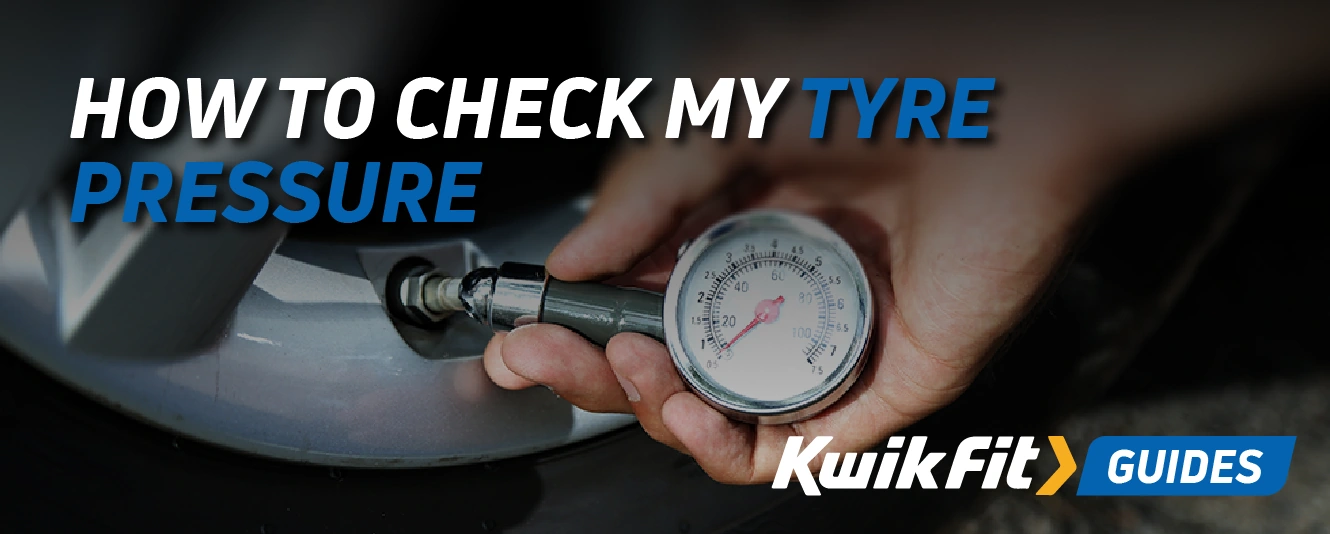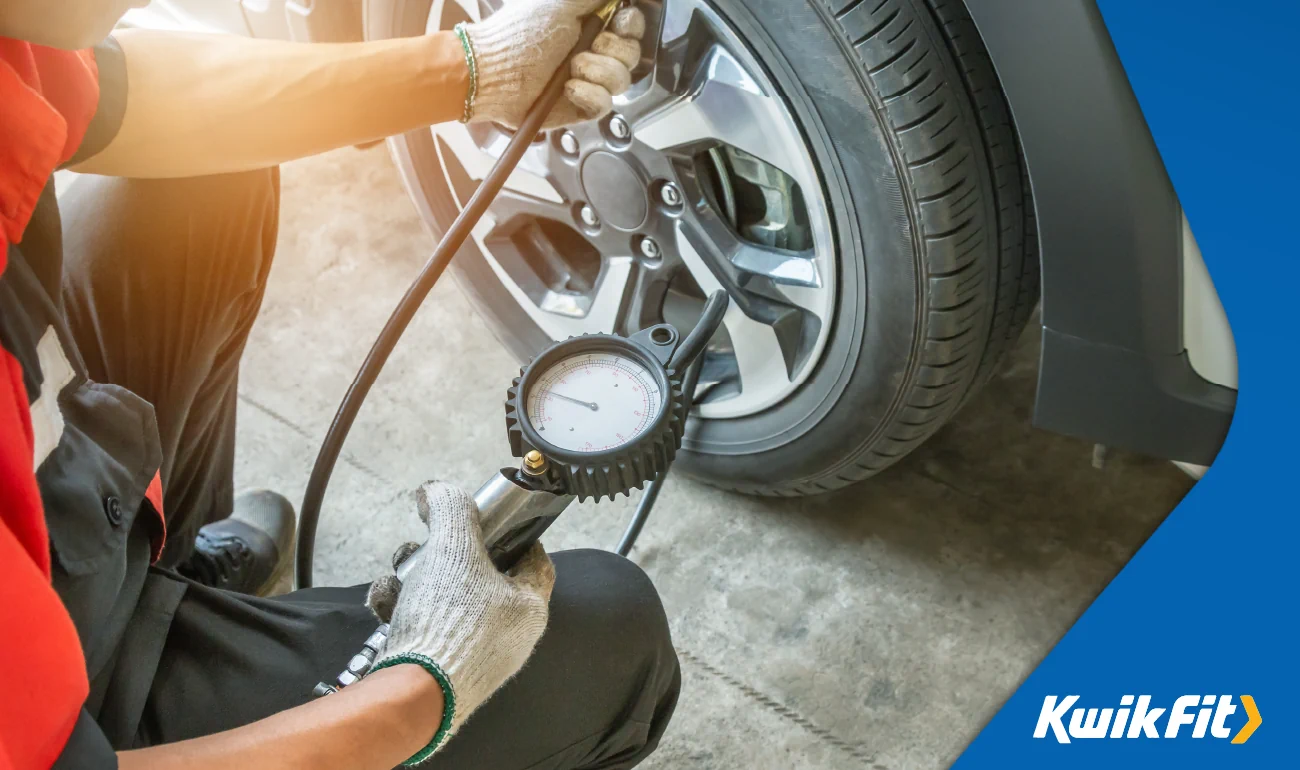How To Check My Tyre Pressure
A 10-step guide to checking your vehicle's tyre pressure.

- Find your vehicle’s recommended tyre pressure in the manual or use our online tool.
- Gather a tyre pressure gauge and, if needed, an air pump.
- Park your car on a flat surface for accurate readings.
- Remove the valve cap from the tyre’s valve stem.
- Attach the tyre pressure gauge to the valve and press firmly.
- Read the pressure and compare it to the recommended level.
- Inflate or deflate the tyre to reach the correct pressure.
- Repeat the process for all four tyres.
- Reattach the valve caps securely.
- Check your vehicle's tyre pressure monthly and before long trips to ensure safety.
Why the correct tyre pressure is so important

When your tyres are maintained well, they typically last longer and respond better to your car's steering. But, having the wrong pressure in your tyres can make driving dangerous, as it affects your ability to brake properly and the handling of your vehicle while you're driving. However, incorrect tyre pressure can pose serious dangers, impacting your braking ability and overall vehicle handling.
Incorrect tyre pressure also increases the likelihood of punctures and tyre damage from hazards like potholes. As well as this, overinflated tyres could end up potentially costing you more due to the risk of blowing out your tyre and increased fuel consumption.
Ensuring your tyre pressure is correct will help with the following things in check:
Improved vehicle stability and handling
Underinflated front tyres increase 'understeer', while low tyre pressure on the rear axle increases 'oversteer'. If all tyres are low on pressure, your car's steering will become generally sluggish. Correctly inflated tyres make for much easier steering.
Increased fuel economy
Correctly inflated tyres have less rolling resistance, which means more miles to the gallon for the driver. To break this down a little, if your tyres are inflated enough, they won't drag on the road as they would if they were underinflated, causing friction and requiring more power (and fuel) to move your car forward.
Greater tyre lifespan
Tyres will wear up to 25% faster if they are not correctly inflated – which means shelling out for new tyres more often. Underinflated tyres are prone to excessive wear on the inside and outside edges of the tread. But, more concerningly, if your tyre pressure drops too low, it can lead to tyre failure, which can be catastrophic if travelling at speed.
The correct tyre pressure
Checking your tyres regularly, or before a long distance journey, can prevent any tyre pressure issues that might slip under the radar. But when it comes to the correct tyre pressure, there is no ‘one size fits all’ measurement. With so many different types of makes and models of cars, identifying the right pressure for your car can feel overwhelming.
At Kwik Fit, we have an online tyre pressure tool that has been designed to remove the stress of having to look through endless lists of car makes and models. Instead, you can type in your vehicle number plate, and we’ll provide you with the right tyre pressure for your car. Please be aware that if you are using your vehicle to carry additional weight, you should always consult your car’s handbook for the correct laden pressure.
All you have to do is type in your vehicle’s number plate and we’ll provide you with the right tyre pressure for your car. Be aware that if you are using your vehicle to carry additional weight, you should always consult your car’s handbook for the correct laden pressure.
Too little or too much pressure

If the pressure of your tyres is higher or lower than the approved levels, you can rectify this quite simply. If the pressure of your tyres is too low, you can use an air pump to inflate your tyres. You can do this at home, or at petrol stations that offer an air pump.
In the event that the pressure of your tyres is too high, you can remove the dust cap and carefully release some of the air in the tyres. Make sure that you do this slowly and carefully, and remember that you will need to recheck the pressure after to ensure that it is correct. If you let too much air go from the tyres, you might find yourself having to find an air pump to top them up.
Tyre inspections with Kwik Fit
At Kwik Fit, we provide a comprehensive tyre pressure tool for a wide variety of makes and models. If we can’t find your recommended tyre pressure or if you have any concerns about your tyres’ condition, we’re here to help. We offer free tyre inspections at all our centres. Simply book your free tyre pressure appointment online, and our trained technicians will conduct a thorough check of your tyres, providing you with the recommended pressures for both the front and rear tyres.
For more information on how we can assist you, feel free to reach out to your nearest Kwik Fit centre today.






